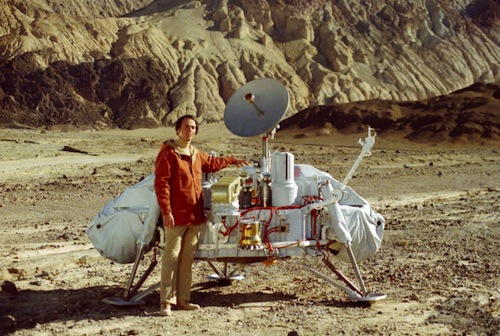 Physics, Earth & Space
Physics, Earth & Space
Multiverse Cosmology: Assuming that Evidence Still Matters, What Does It Say?

Recently, science blogger Chad Orzel wondered why astronomer and popular science guru Carl Sagan, who died in 1996, was not replaced in his role as a “cultural phenomenon.” One reason is, the culture has changed. As the multiverse buries the universe, cosmologists eclipse astronomers. Edgy theories replace bold exploration.
So what new light have the three key multiverse concepts — inflation, string theory, and M-theory — in fact shed?
Inflation: Scientific American complained recently, “Is the theory at the heart of modern cosmology deeply flawed?”:
Highly improbable conditions are required to start inflation. Worse, inflation goes on eternally, producing infinitely many outcomes, so the theory makes no firm observational predictions.
 A 2013 Arxiv physics paper notes that the inflationary paradigm is in trouble anyway from the Planck2013 results and calls for “a cosmological paradigm whose simplicity and parsimony matches the nature of the observed universe.” A recent theory out of Princeton, that we can dispense with inflation if our universe depends on a mysterious ghost field, probably won’t meet that standard.
A 2013 Arxiv physics paper notes that the inflationary paradigm is in trouble anyway from the Planck2013 results and calls for “a cosmological paradigm whose simplicity and parsimony matches the nature of the observed universe.” A recent theory out of Princeton, that we can dispense with inflation if our universe depends on a mysterious ghost field, probably won’t meet that standard.
String theory: In a late 2011 piece for Harper’s, MIT physicist Alan Lightman concedes, “Neither eternal inflation nor string theory has anywhere near the experimental support of many previous theories in physics, such as special relativity or quantum electrodynamics.” Columbia mathematician Peter Woit is blunter: After two decades, string theory is still just a hunch aspiring to be a theory. It hasn’t predicted anything and its practitioners are “willing to redefine what doing science means in order to justify their labors.” “No part of it has been proven, and no one knows how to prove it,” laments lapsed string theorist Lee Smolin. And “because we can’t falsify the idea, … it isn’t science,” says physicist David Gross.
Meanwhile, data from the Large Hadron Collider, the multi-billion-dollar European particle accelerator, have provided no support for string theory. So, for example, Woit was hearing bromides like “The most important product of knowledge is ignorance” — words no human being has ever uttered after making a useful discovery.
About the string landscape as a whole, David Berlinski observes drily, “It works no matter the theory. … To the question What are the odds? the landscape provides the invigorating answer that it hardly matters” (Devil’s Delusion, p. 124). Multiverse cosmologist Max Tegmark is undeterred:
String theory certainly hasn’t come as far as inflation and quantum mechanics in terms of establishing itself as a testable scientific theory. However, I suspect that we’ll be stuck with a Level II multiverse even if string theory turns out to be a red herring.
So the faithful remain. String theory could be tested, we are told, by black holes orbited by pulsars, revealing extra dimensions. In a new bubble universe proposed at Stanford, featuring new laws of physics and a new conception of science, “problems with string theory unification have magically vanished.” Meanwhile, one physicist has proposed abandoning string theory in favor of knot theory, “to delve into the deep recesses of mathematical research” and explain things in “down-to-earth terms that everyone can understand.”
M-theory (the multiverse): Proponent Brian Greene has admitted (2012) that there is no evidence for it: “As of today, we are far from crossing this threshold.” Colleague Roger Penrose sums up, “What is referred to as M-Theory isn’t even a theory, it’s a collection of ideas, hopes, aspirations.”
And what are do we learn by accepting it all anyway? Alan Lightman tells us in Harper’s:
If the multiverse idea is correct, then the historic mission of physics to explain all the properties of our universe in terms of fundamental principles — to explain why the properties of our universe must necessarily be what they are — is futile, a beautiful philosophical dream that simply isn’t true. Our universe is what it is because we are here.
So the multiverse has little or no explanatory value. But we are told we mustn’t go back either. Leading philosopher of cosmology Tim Maudlin assured us in 2012 that if there is no multiverse, it would be a “terrible mistake” to think that an intelligent designer is the only remaining option. We can adjust our notions of probability instead.
Always, the war on probability. Many of us have hit on a simpler and more reasonable approach by now: The multiverse has always been principally a religious concept. Science writer Marcus Chown underlines this:
Religious people say that, by invoking a multiverse, physicists are going to extraordinary lengths to avoid God. But physicists have to go where the data lead them.
Actually, the data are not leading Chown or any other multiverse advocate. That much is now obvious. Desire alone sustains their faith. It is the sort of religion that is true, Copernicanly speaking, even if the supportive facts never appear and the theories that undergird it fail.
So ridding science of God has turned out to mean ridding it, not of religion, but of the need for evidence. We are not left with nothing, as philosophers and artists have wailed, but with everything and its opposite.
Editor’s note: Here are links to the whole series “Science Fictions” series.
Image credit: Carl Sagan with a model of the Viking lander/JPL.
